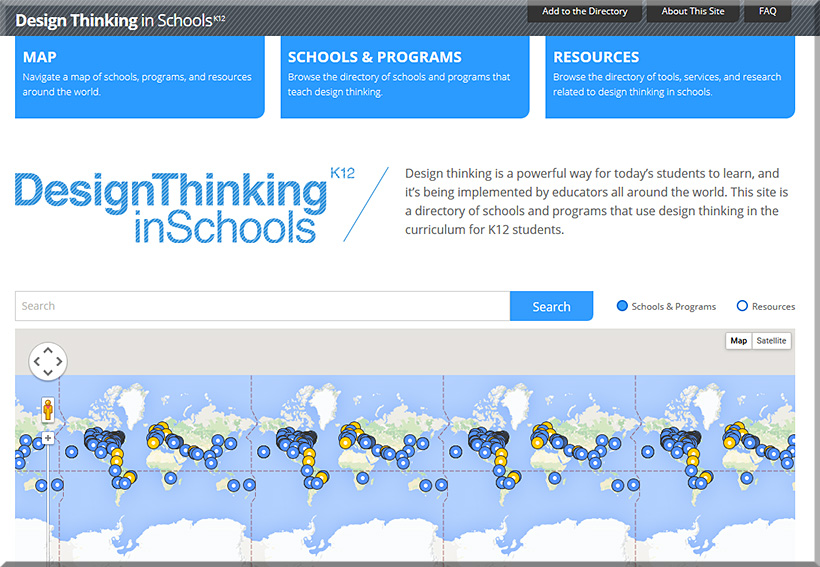Is ‘Design Thinking’ the New Liberal Arts? — from chronicle.com by Peter N. Miller
Excerpt:
What is design thinking? It’s an approach to problem solving based on a few easy-to-grasp principles that sound obvious: “Show Don’t Tell,” “Focus on Human Values,” “Craft Clarity,” “Embrace Experimentation,” “Mindful of Process,” “Bias Toward Action,” and “Radical Collaboration.” These seven points reduce to five modes — empathize, define, ideate, prototype, test — and three headings: hear, create, deliver. That may sound corporate and even simplistic, but design thinking has been used to tackle issues like improving access to economic resources in Mongolia, water storage and transportation in India, and elementary and secondary education and community building in low-income neighborhoods in the United States.
John L. Hennessy, president of the university, and David Kelley, head of the d.school, have been having a conversation about what the d.school and design thinking mean for Stanford. Hennessy sees them as the core of a new model of education for undergraduates. Two such classes on design thinking have already been created: “Designing Your Life,” which aims to help upperclassmen think about the decisions that will shape their lives after graduating, and “Designing Your Stanford,” which applies design thinking to helping first- and second-year students make the best choices about courses, majors, and extracurricular activities. Both are popular. Kelley argues for incorporating design thinking into existing courses across the humanities and sciences.
One size doesn’t fit all innovation — from innovationexcellence.com by Ralph Ohr
Excerpt:
Design Thinking also focuses on understanding the needs of potential customers outside the building. But its motivations and tactics are different from those of Customer Development. Design Thinking doesn’t start with a founder’s vision and a product in-hand. Instead it starts with “needs finding” and attempts to reduce new product risk by accelerating learning through rapid prototyping. This cycle of Inspiration, Ideation and Implementation is a solutions-based approach to solving customer problems. Design Thinking is perfectly suited to situations where the process isn’t engineering-driven; time and money are abundant and the cost (and time) of a failure of a major project launch can be substantial. This process makes sense in a large company when the bets on a new product require large investments in engineering, a new factory or spending 10s or 100s of millions on launching a new product line.
…
Design Thinking is based on properly understanding customer needs and iteratively prototyping to meet those needs with a satisfying solution. It primarily aims at doing the right things (i.e. serving a well-understood need properly) before investing time and resources.
What is Design Thinking? [Infographic] — from smashfreakz.com
Design Thinking in Schools
Design thinking is a powerful way for today’s students to learn, and it’s being implemented by educators all around the world. This site is a directory of schools and programs that use design thinking in the curriculum for K12 students.
This site has been put together by IDEO and the K12 Lab Network at Stanford’s d.school. Over the years we have seen so many schools and programs create amazing experiences for youth, helping them get in touch with their “inner designer” and build confidence in their creative abilities. With more and more programs emerging around the world, we wanted a place where we could see the global movement unfold, we wanted parents to find programs to send their kids to, and we wanted teachers and administrators to be able to find like-minded colleagues with they could connect.









